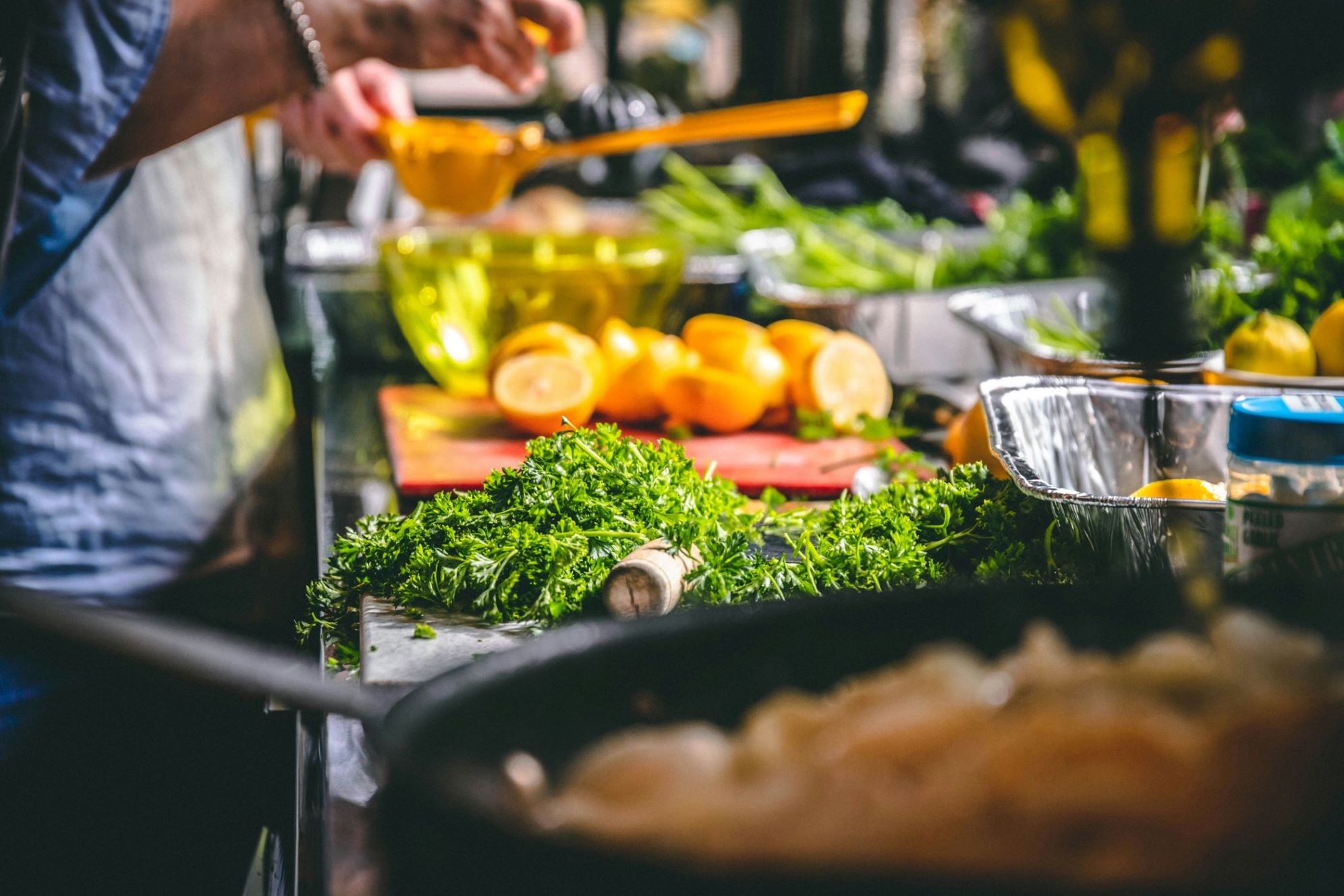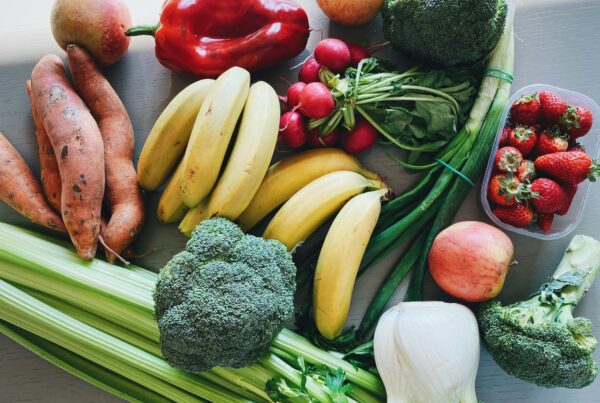Hosting and feeding a large group – in this context, a family reunion – can feel overwhelming, but it doesn’t have to be. First, we’ll go over meal choices that suit a crowd. Then, we’ll talk logistics.
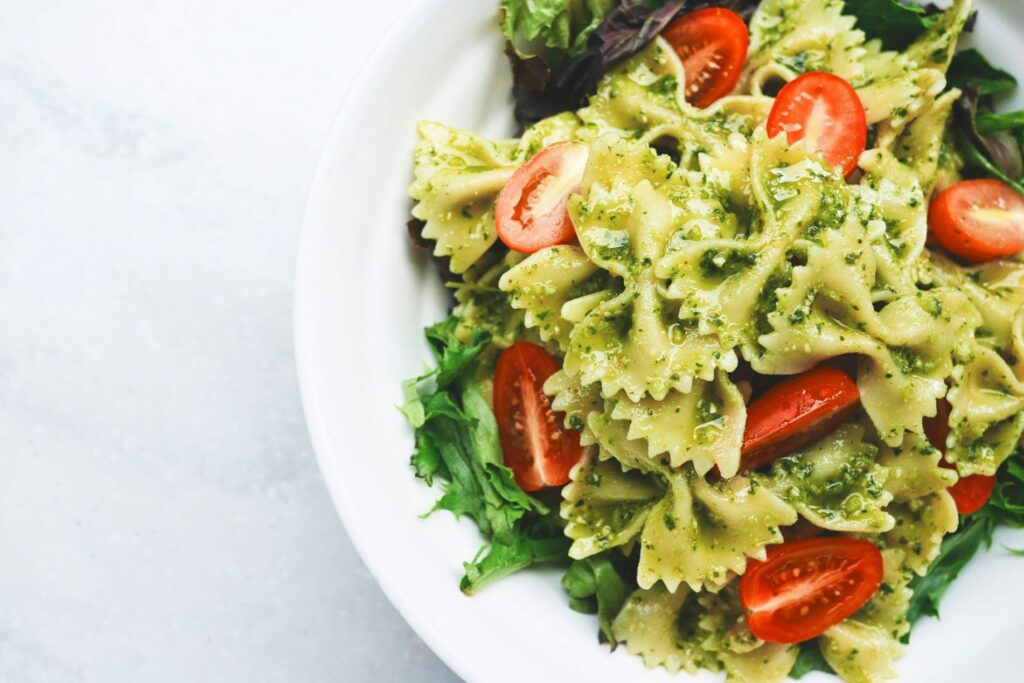
Food:
1. Choose Versatile Base Meals
Take a meal that can meet a high volume standard with a regular amount of cooking utensils. Here are some staples that are easy to prepare, scale up, and customize:
—Pasta: A big stock pot or two cooks the vast majority of this meal.
– Red Sauce with Meatballs: Classic and hearty; you can easily incorporate meat, cook separately and have each person add it to their plate as preferred, or leave it out entirely
– White Sauce Alfredo: Creamy and rich, a hit with those craving comfort food. Add chicken or broccoli to mix it up. Hard to get wrong!
—Potatoes: a few casserole dishes or just an oven is all you need to cook the mains here.
– Casserole: funeral style or gratin
– Baked Potatoes: Offer toppings like chili, cheese, sour cream, and chives.
—Tacos: 1-2 pans for the filling, a knife to chop and the cutting board.
– Mexican-Style: Seasoned beef or chicken with cheese and any additions you like.
– PNW-Style: cooked onions, meat — sometimes game meat like venison or elk — and potatoes typically make up the filling, and toppings may include olives, sour cream, lettuce, salsa, tomatoes, shredded cheese, refried beans, etc.
—Soup: Usually a one-pot meal that go a long way, and even more so when a side like biscuits is added.
– Chowder: Corn or clam chowder
– Broth-Based Soups: Chicken noodle or minestrone
—Grazing boards: Customizable and scalable in every imaginable way
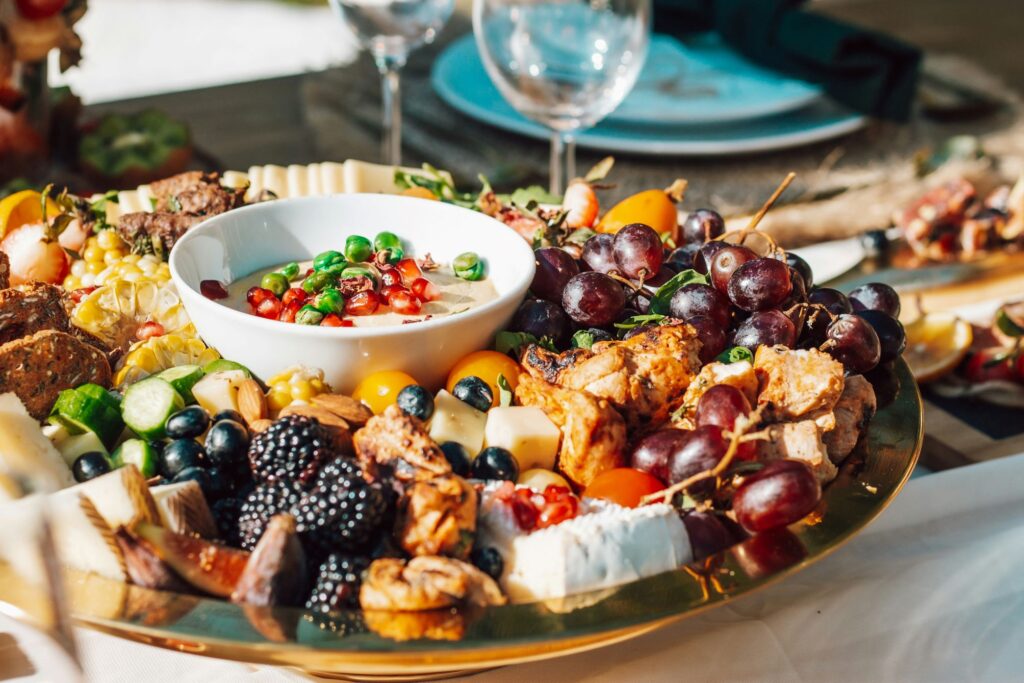
Pro tip 1: Allergy Accommodation – if there is only one or a few people that require a specific diet, ensure their food doesn’t get mistaken as part of everyone’s meal by always serving it in a slightly separated but accessible area. i.e. the kitchen counter instead of the dining hall.
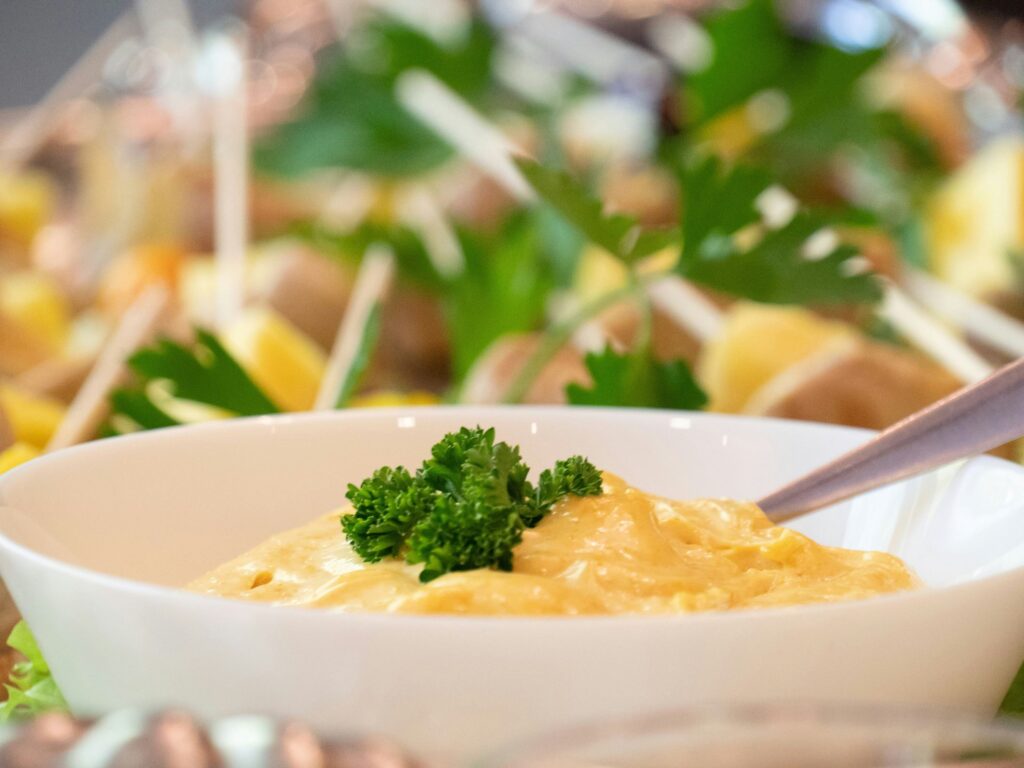
2. Turn Every Dish Into a Bar
Bars are the ultimate hack for serving large groups. They simplify preparation, cater to individual preferences, and make serving easy. Here are a few examples:
– Salad Bar: Include a variety of greens, chopped vegetables, croutons, nuts, proteins (like grilled chicken), and dressings for custom salads.
– Potato Bar: Offer baked potatoes with toppings like butter, cheese, sour cream, bacon, green onions, and chili.
– Pasta Bar: Set out cooked pasta (different types if you can manage) alongside sauces (red, white, and pesto), meatballs, grilled chicken, and steamed veggies.
Pro tip 2: make it even easier by having most ingredients prepped and ready to go—think chopped vegetables, cooked taco fillings, etc.
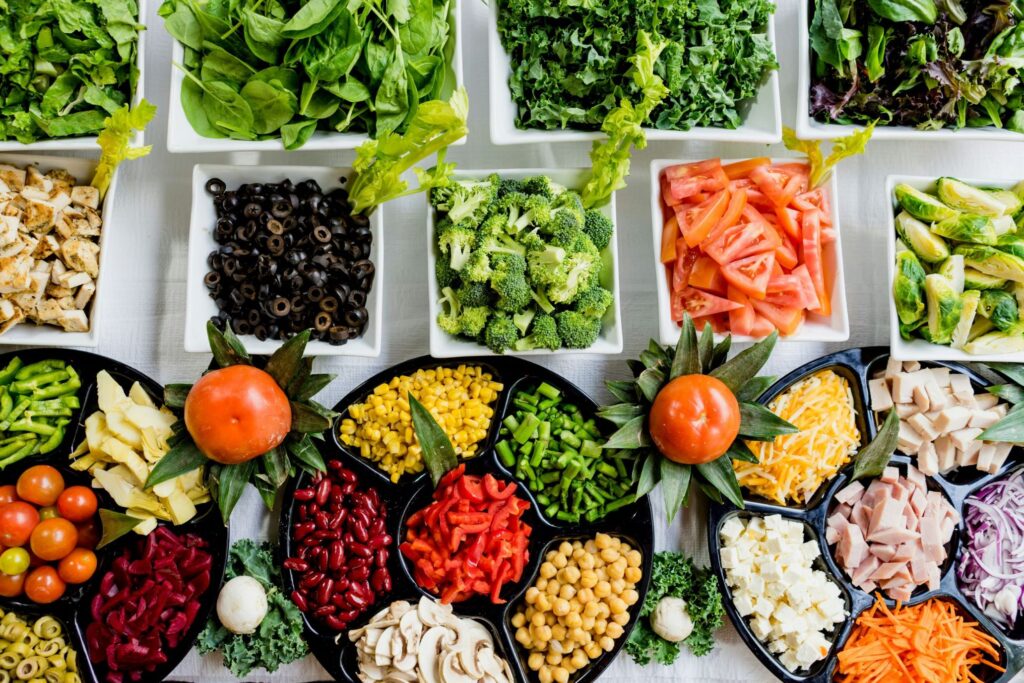
3. Keep It Simple with Disposable Dishes
Opt for disposable plates, bowls, and utensils to save time and effort. If disposables are not an option, try to rotate dish duty each time cleanup is happening.
4. Consider Catering as a Backup Plan
If time is tight but your budget isn’t, catering can be a lifesaver. Many restaurants and food services offer large-group options delivered to your door and ready to serve. Some even set up and serve for you.
Pro tip 3: Portion Planning – Aim for half a pound of the main ingredient per person (e.g., pasta, meat) and scale sides accordingly. Or, you might estimate on the high side to allow for those that have a higher caloric need. Pregnant/nursing ladies, raise your hand!
If you’re like me, don’t do any math. Just estimate generously and plan for the possibility of a leftovers-meal.
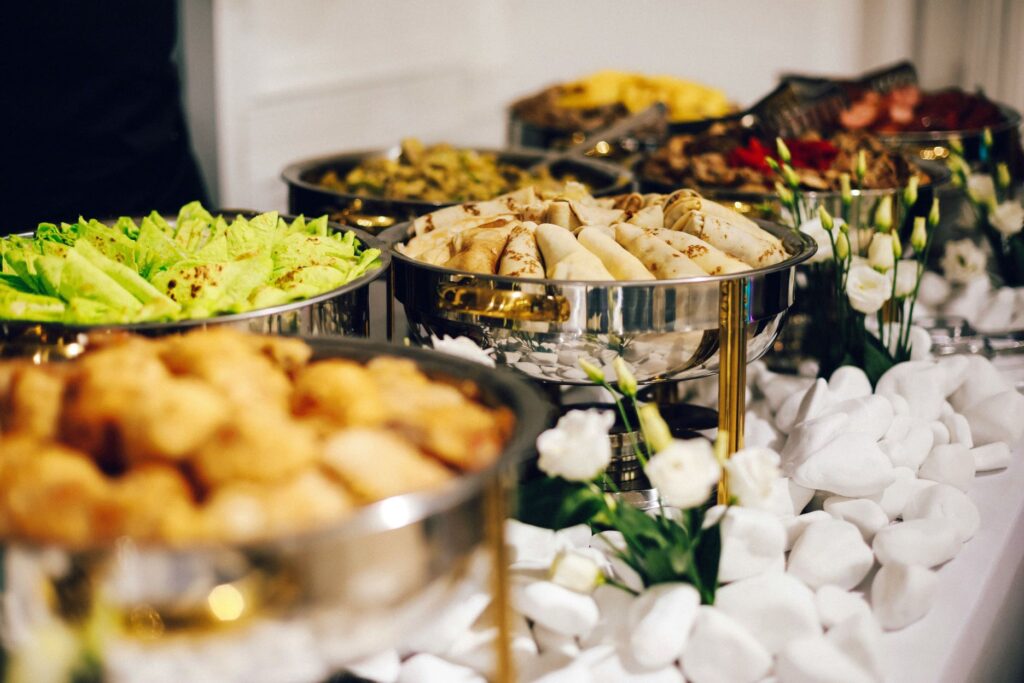
Meal Logistics – Context: Family Reunion
There are several ways this could be done; these are just a few ways we’ve seen –
1. My Turn, Your Turn: Each family unit signs up for 1 meal (or more, depending on family size and situation). That family can either give a list of the groceries needed for their meal (if they’re flying and others are doing the shopping that arrived earlier), or can bring/buy everything themselves for the meal they’re preparing. Receipts are very helpful for settling afterwards.
2. Chef’s Orders: One adult or family is heading up the meals, and two or more adults/families are assisting in the kitchen. The assistants/head chef can rotate from day to day.
3. John and Jane Doe: One couple/family is in charge of all the meals for the entire reunion. They charge per person beforehand so they can do all the shopping. They either cook every/most meals themselves, or oversee and delegate every meal. Definitely a “type A” approach.
By focusing on versatile dishes, self-serve stations, and simple cleanup strategies, you can host a large group with confidence. Whether you cook everything yourself or bring in some help, the key is preparation, flexibility, and enjoying the fruits – or vegetables – of your labor.

